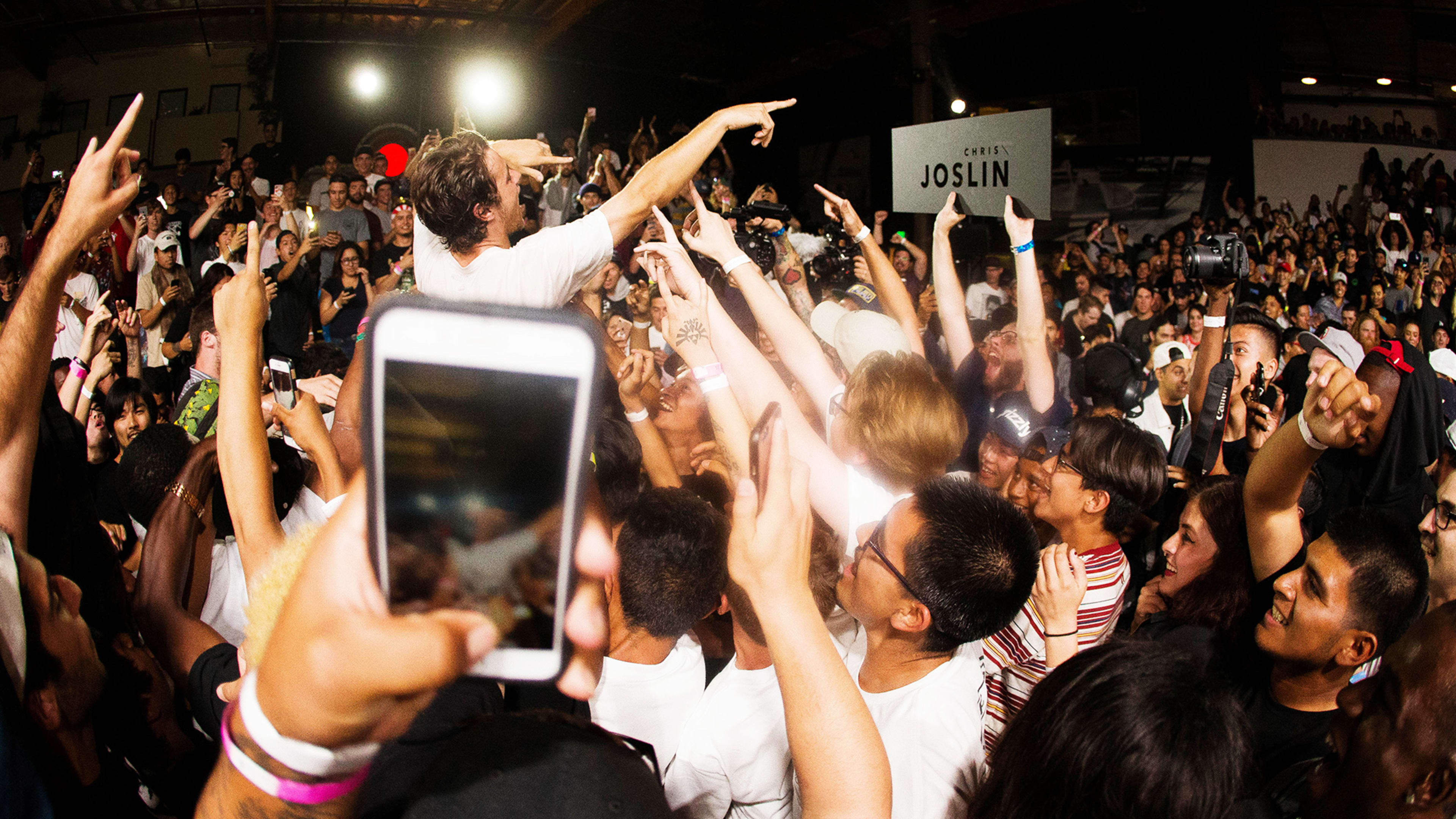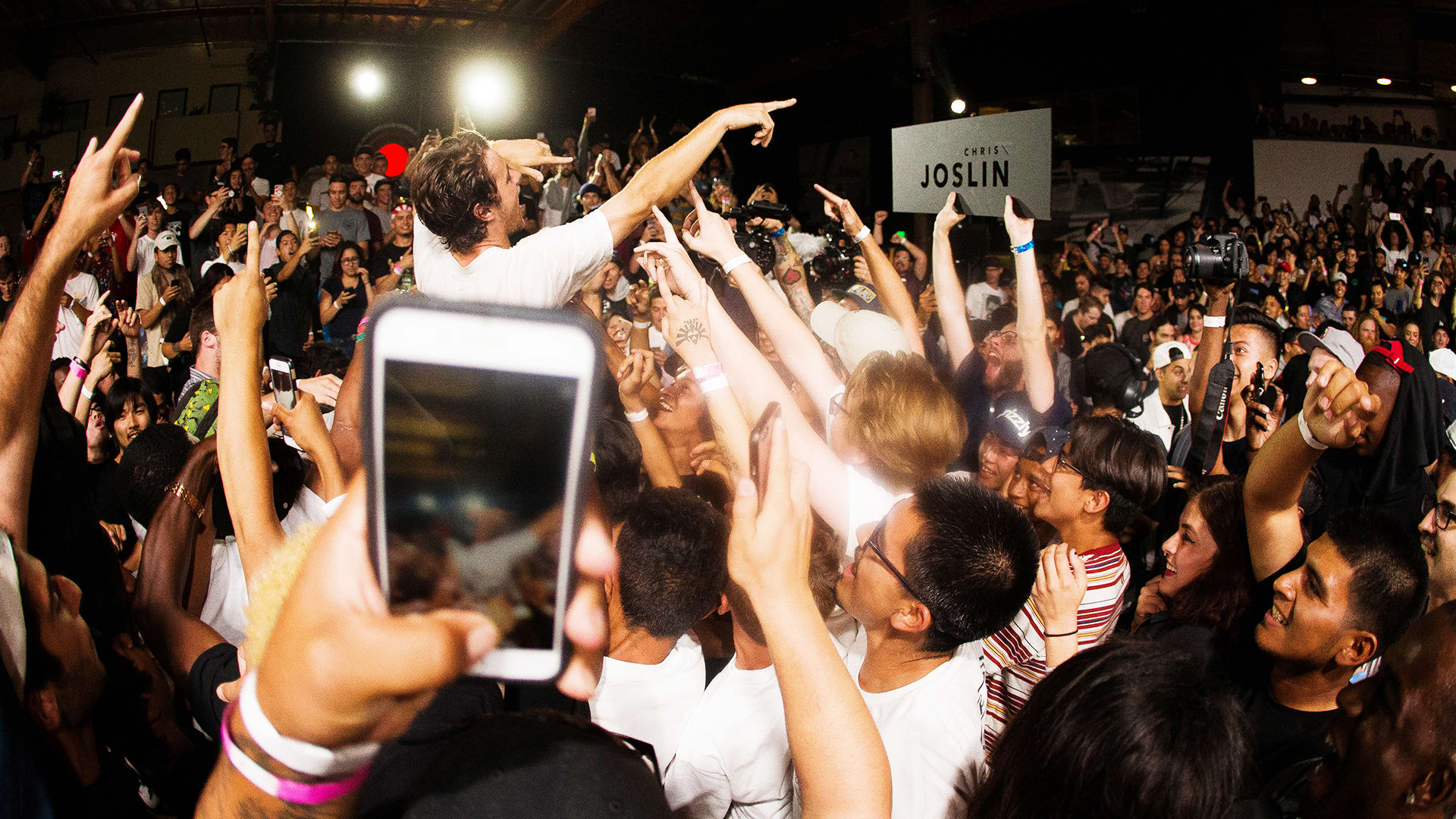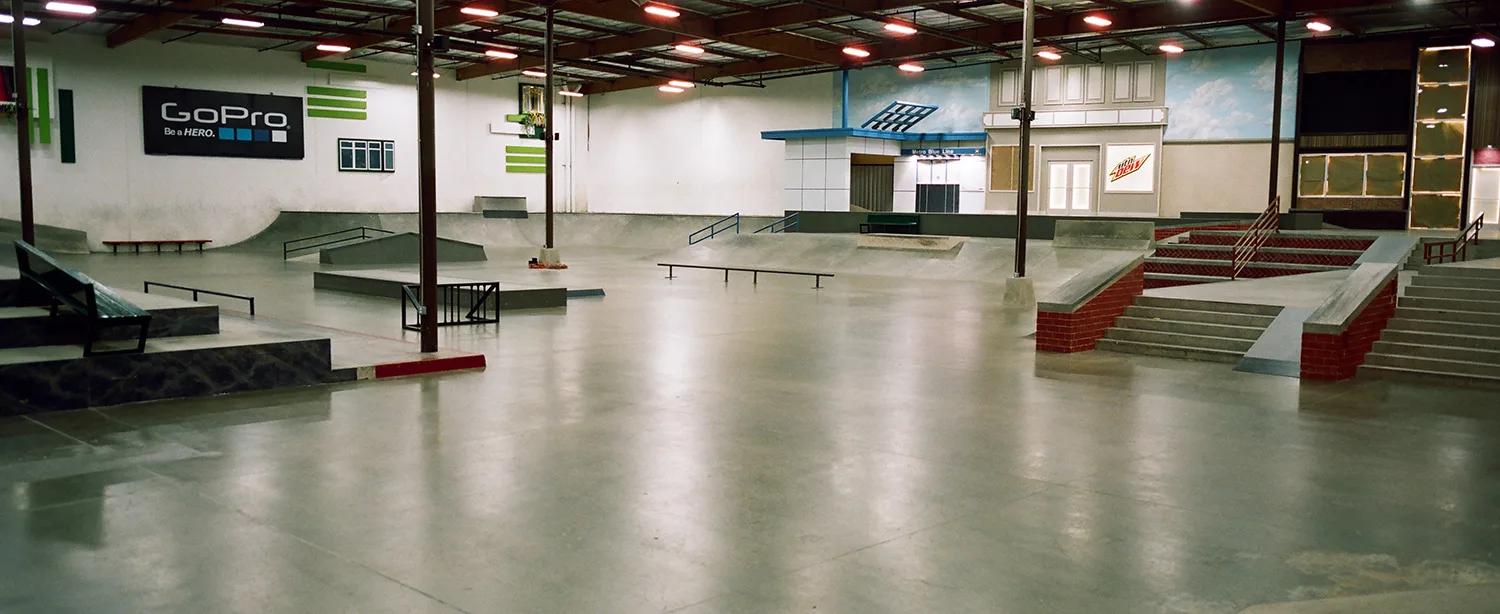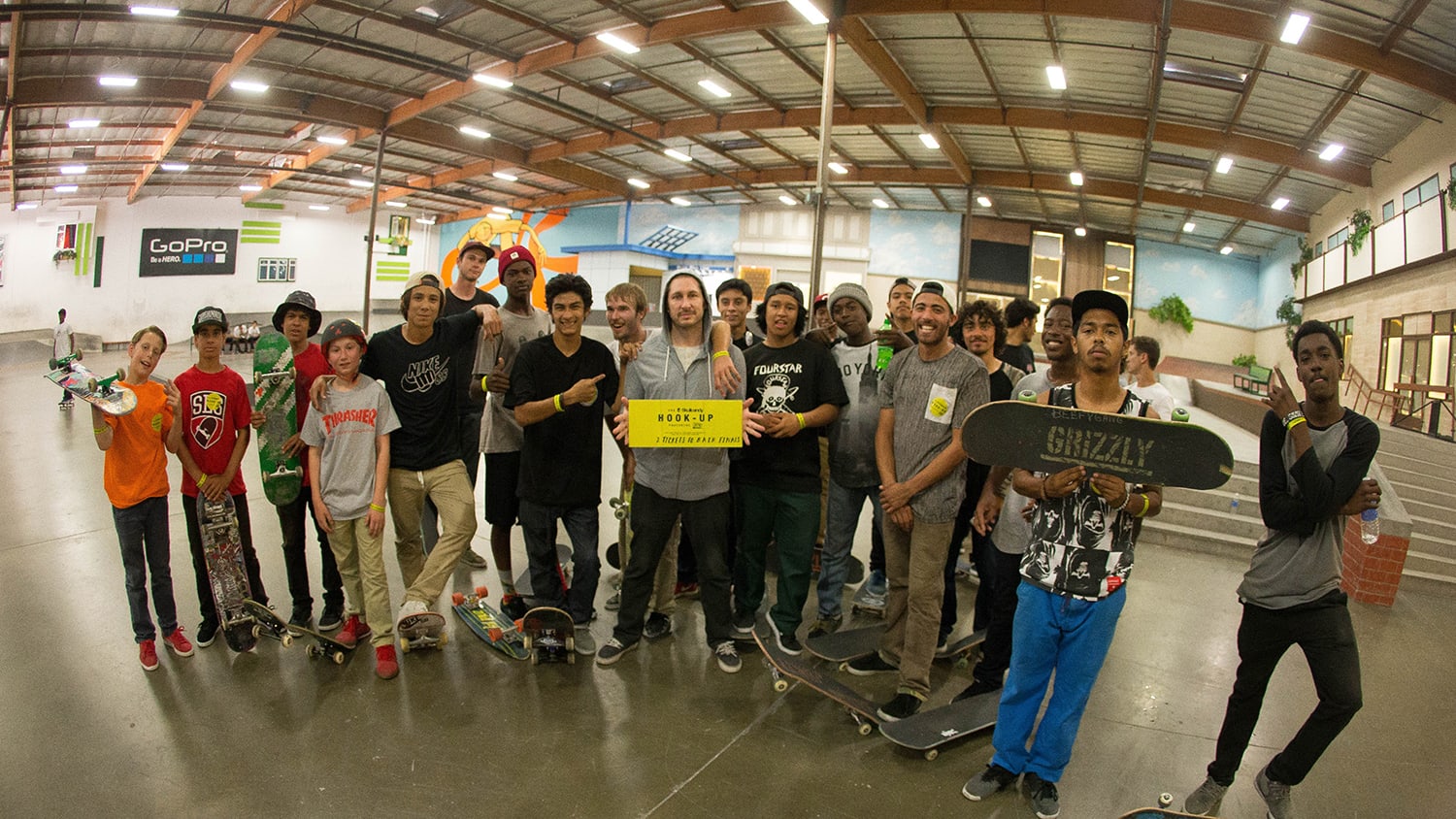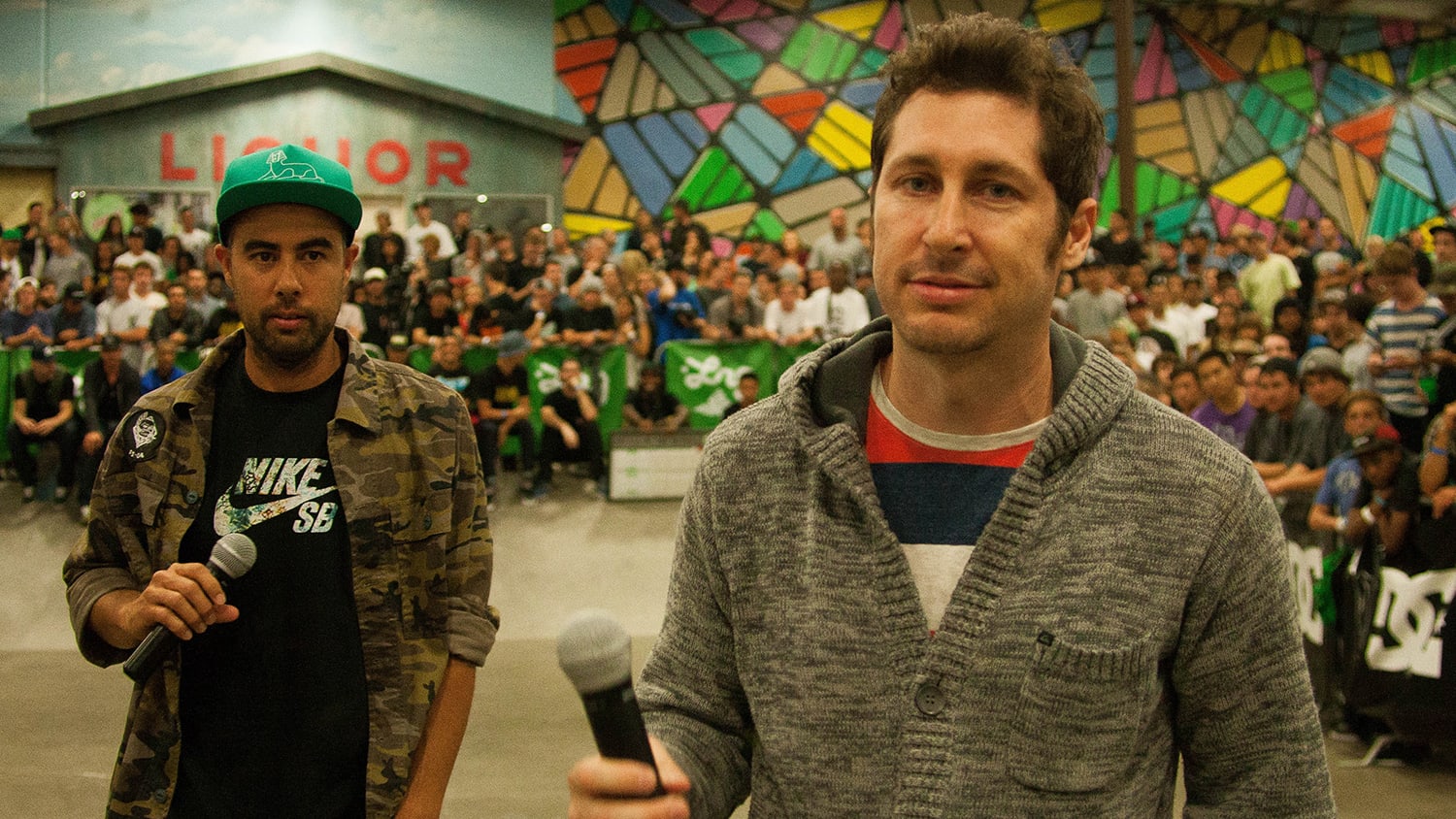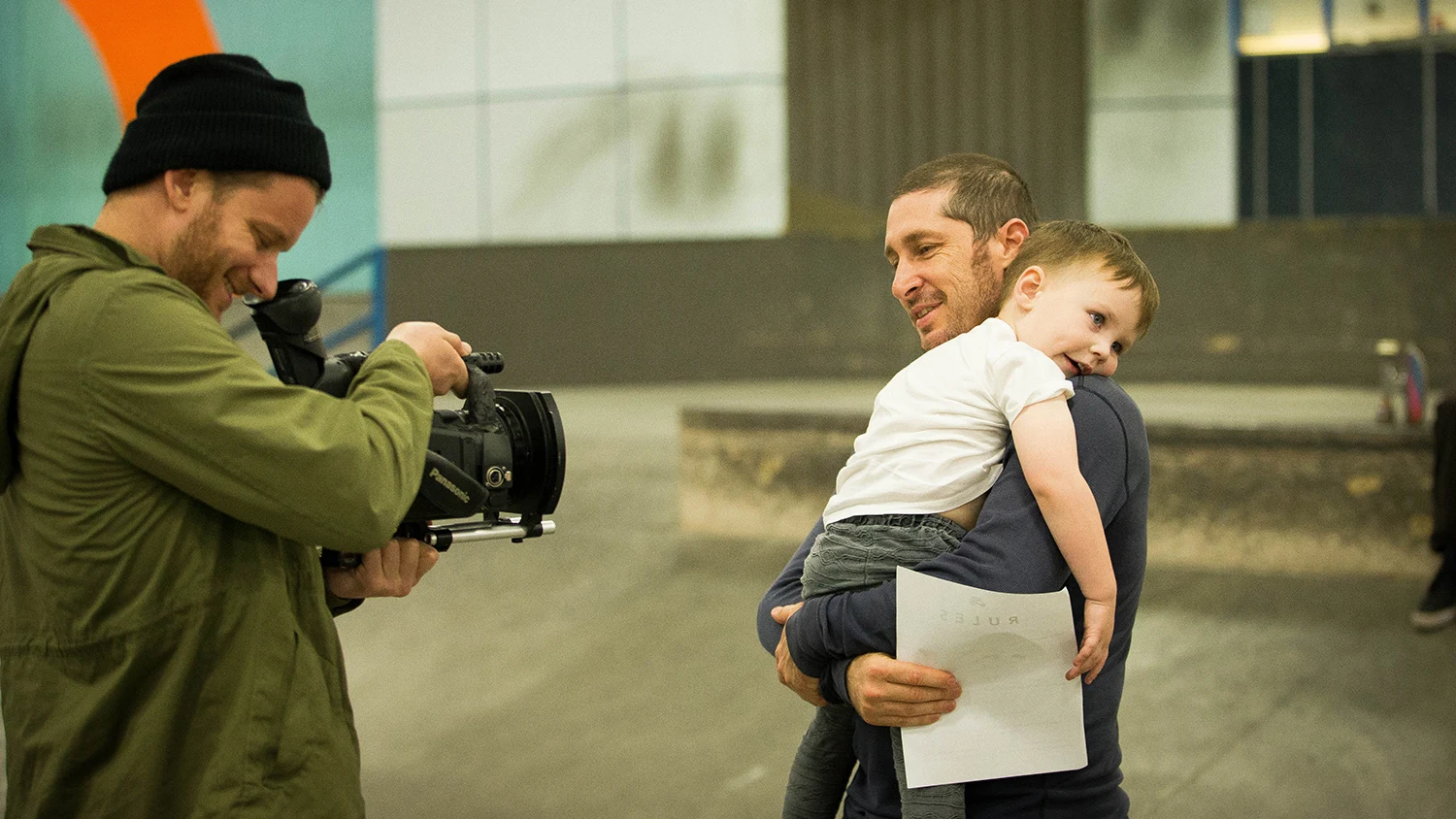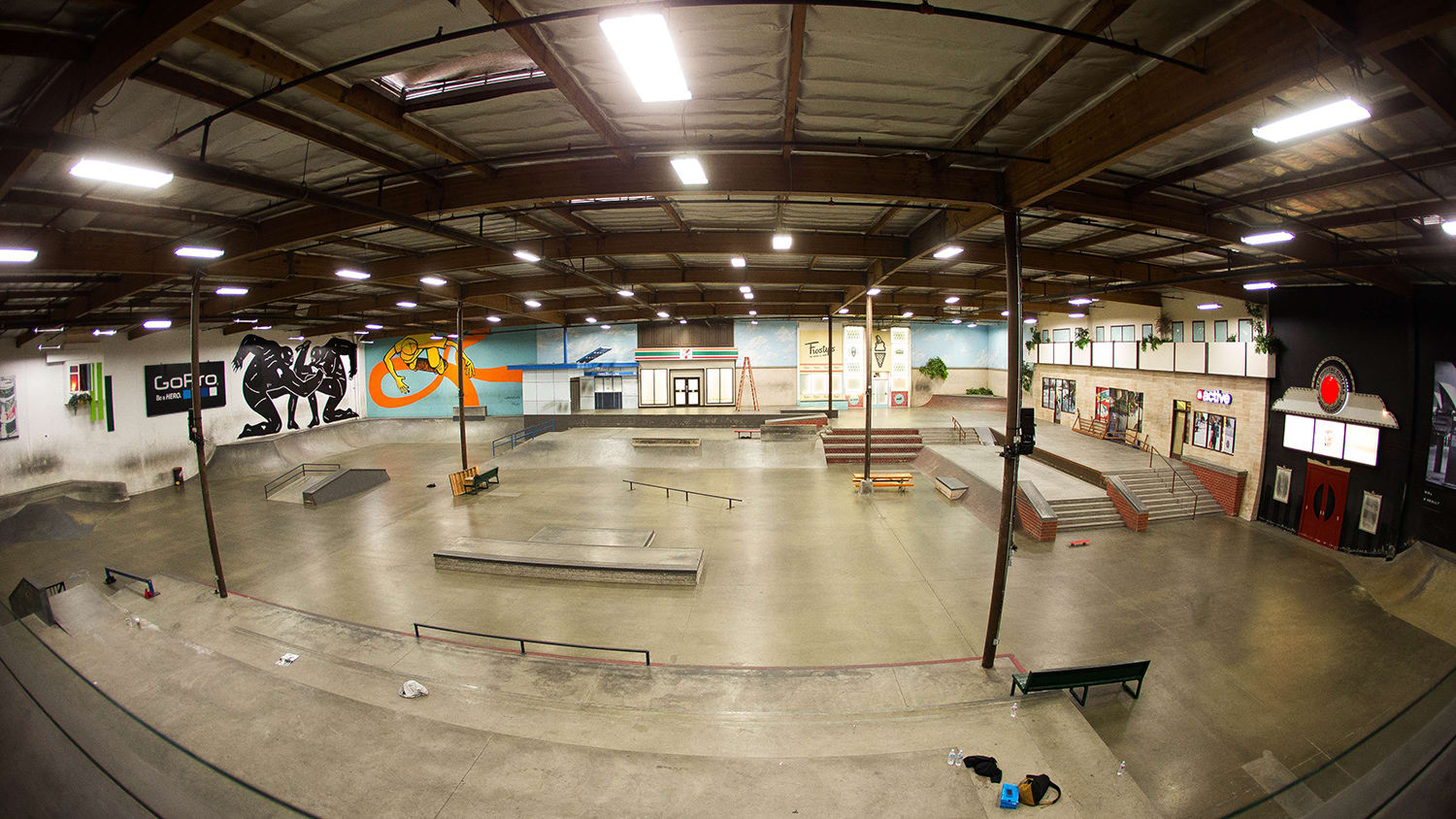Steve Berra doesn’t like talking about himself–primarily out of modesty but the fact that his credentials run at an exhaustive length probably has something to do with it as well.
The TL;DR version of Berra’s life is that he rose from abject poverty to the upper echelons of professional skateboarding, due in no small part to the Berrics–the massively popular indoor skatepark in Los Angeles Berra founded alongside fellow skateboarding legend Eric Koston. For the past 10 years, The Berrics–a portmanteau of “Berra” and “Eric”–has become a staple in the skateboarding community both as a physical destination for premiere events like Battle at the Berrics (the annual skateboard competition akin to a game of H.O.R.S.E. in basketball) as well as digitally, with magazine-style profiles and a deep library of videos of tricks and shenanigans from inside the Berrics featured on the company’s website.
However, Berra’s ascension to becoming one of the most recognized names in skateboarding was far from linear. Although skateboarding has always been his primary focus, Berra’s creative aptitude splits into a staggering list of hyphenates including film director, screenwriter, actor, content creator, and brand consultant for the likes of Nike, Gatorade, Unilever, and more. It may seem obvious with a resume that random that there hasn’t necessarily been a fixed blueprint for Berra’s career. For the better part of his early years, Berra operated from a state of emergency, feeling that his skateboarding days were numbered. Yet, over time, he’s learned how to harness that impetuosity into a certain kind of fearlessness that has allowed him to permeate across multiple industries, fortifying his personal and professional brands as multifaceted and creatively nimble.
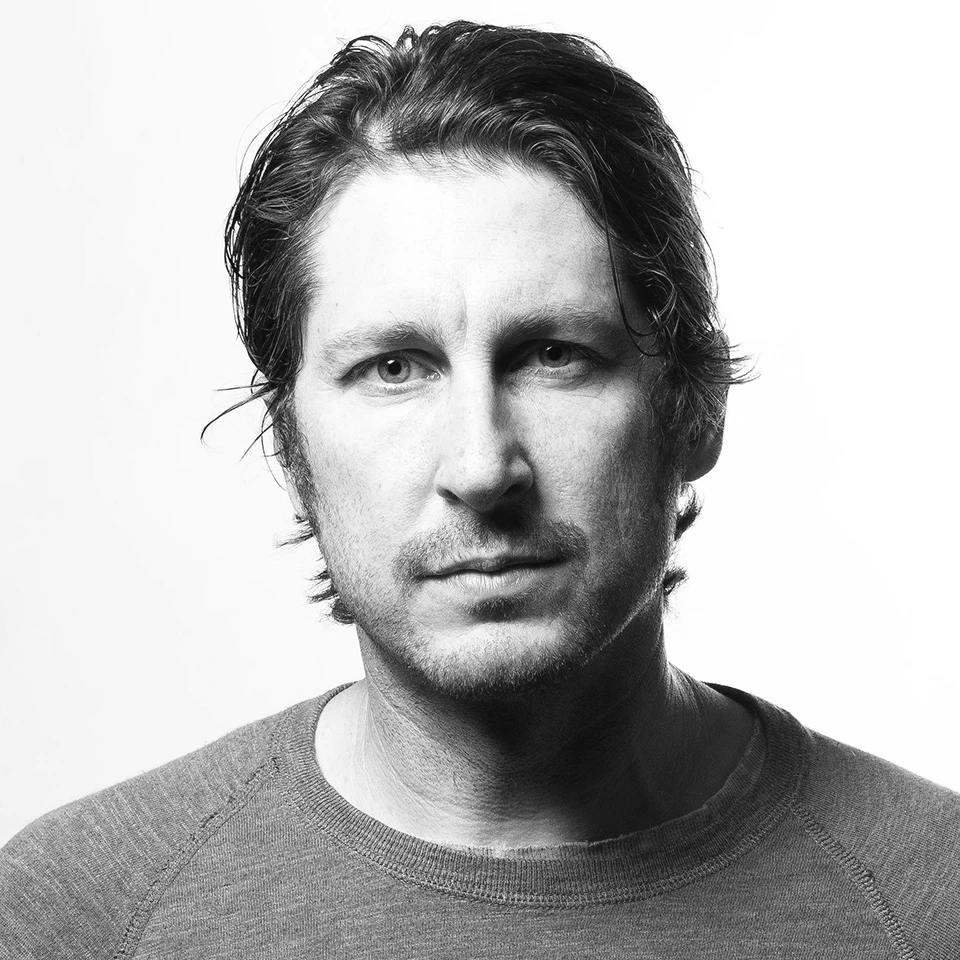
Growing up between Missouri and Nebraska, Berra actually started out playing soccer and showed a natural gift for the sport that led to more than 100 first-place trophies. What could have easily been a soccer prodigy story was derailed in the eighth grade when Berra’s friend took up skateboarding.
“I took to the counterculture spirit of skateboarding–it kind of just bit me. It was the perfect blend of athleticism and artistry,” Berra says. “More than anything, it was a challenge because I really feel like every day you conquer a little bit more of the physical universe. You spend most of your time not landing tricks until you can land them on every try. The feeling of skateboarding is just something that I hadn’t really experienced.”
At 16, Berra made it out to California, landed his first sponsorship with skateboarding shop Blockhead, went pro two years later, and then moved into Tony Hawk’s home where he was one of the four original members of Hawk’s company Birdhouse.
“He had like two houses, two cars, two cats, two dogs, and a wife–I thought he was set,” Berra says. “I remember being in my room and he and his wife were talking and she was a little stressed, like ‘look, we have $3,500 left in the bank.’ And I was thinking to myself, ‘Oh, my god–they’re rich!’ I came to California with 40 bucks in my pocket and a backpack and a skateboard.”
Relative wealth aside, Hawk was indeed in dire financial straits, which led him to give Berra formative, if somewhat myopic, advice.
“Tony had gone from being this massive icon in the ’80s, and in ’90s there’s a shift in skateboarding from the way that Tony skated to street skating, plus everyone just seemed to stop skating. So he went from making millions of dollars to having $3,500 in the bank,” Berra says. “He gave me this piece of advice–and I think he truly believed this time, which is funny because he ended up becoming worth millions of dollars eight years later–he said you’ve got to look at skateboarding as a passion, not as a career.”
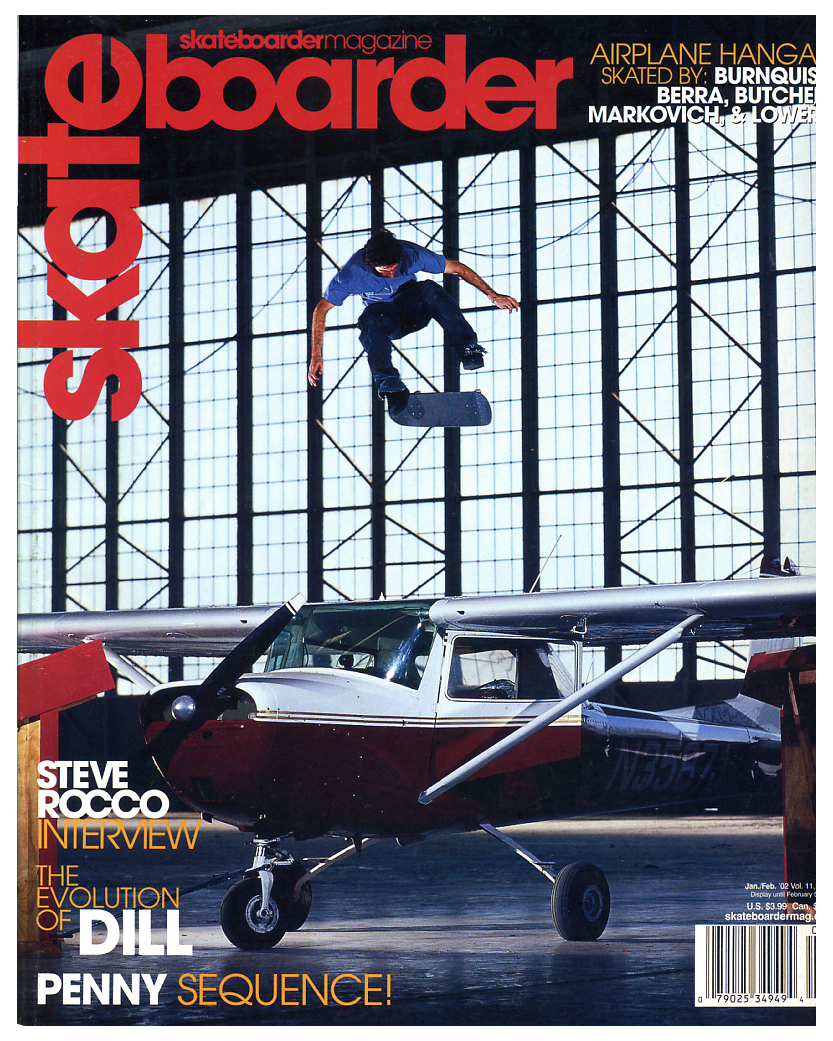
“Here I was one of the best guys with no sponsor, no money, and a pregnant girlfriend, and this guy saved my life by giving me a job,” Berra says. “And then skateboarding started to pick up and everyone started doing better. But, at the time, it still wasn’t a lot of money.”
However, Hawk’s advice was still ringing in Berra’s mind. Whatever income he was making he felt he needed to have a backup plan, and that panic forced him out of the comfort of skateboarding toward trying his hand at something that, until that point, had been a distant passion: acting. Berra studied acting for years while continuing to skate, landing a few commercials before his first major role on the short-lived drama 413 Hope St.
“I really enjoyed it in the beginning because it was new. But I also realized I’m this guy they’re giving lines to–I felt like I could be doing more,” Berra says. “So I started writing–and I wrote a lot of really bad stuff.”
During the late ’90s, Berra’s high-wire act had him balancing screenwriting, skateboarding, and picking up acting gigs here and there–most notably his arc as Todd Mulcahy on Felicity. It was around this time that Berra was hit with something of an epiphany–not unlike the bus that mowed him down after declaring his undying affection for Keri Russell: This is the end of his skateboarding career.
Call it a quarter-life crisis, but during his mid-20s, Berra began hearing the ticking clock on his skateboarding days grow to a deafening pitch. Back with Hawk at Birdhouse, Berra created one of the top skateboarding videos of all time, The End, a grisly ode to the seemingly transient nature of the sport.
“My partner Eric [Koston] and I always thought our skateboarding career was only going to be a couple of years because when we turned pro as teenagers, the guys that we pushed out were only 22, 23 years old,” Berra says “We called it The End because we thought that after this, we’re not going to have careers–this has got to be it. We’re 25 right now and there’s no way we can keep doing this.”
That sense of urgency had the dual effect of trying to make the most of the sport while he could but also setting up his future beyond it. With the money from his best-selling shoe line (the Berra 3 and Berra 4) and a re-writing job on a script, Berra was able to buy the building that would become the Berrics. This was also when met with a producer at Warner Bros. who got him the money he needed for writing and directing his first major feature, The Good Life. Starring Bill Paxton and Zooey Deschanel, The Good Life was an official selection at Sundance in 2007, and Berra thought the film had potential for a major release. The producers, however, decided to cut 17 minutes and sell it to a DVD company.
“I was crushed. I basically put my whole life on the line. I put my skating career on the line,” Berra says. “I came back after Sundance and I look at my next royalty check and I sold 50,000 pairs of shoes, not a million like I did at the height of my career. I had bought a house and gutted and designed it, so I had spent all my cash–I was kind of broke.”
Berra’s managers at Anonymous Content approached him to see if he had any idea what he’d like to pursue next. Berra’s vision proved to be an amalgamation of his past experiences. The Berrics has always been more than just a skatepark. Berra’s intention has been to supplement a physical safe haven for young skaters where they could practice tricks without getting harassed by cops on the street, with media involving the skateboarding community, whether that was highlighting must-have gear or profiles on skateboarders.

The Wall Street Journal reported in 2009 that the Berrics’s website “had more unique visitors than sites for all of the major skateboarding magazines, and ESPN.com’s action sports page.”
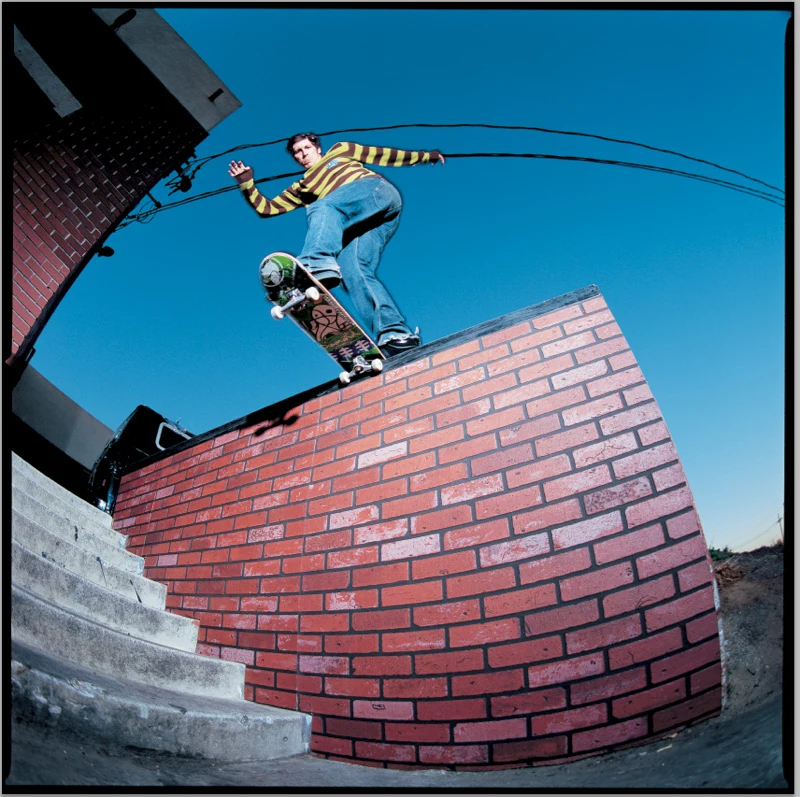
Berra and his team have created a variety of content for brands including Target, Gatorade, Unilever, Mountain Dew, Nike, Adidas, and Converse. And the Berrics’s empire continues to grow: They’ve expanded to a 36,000 square-foot building in downtown L.A. And in 2014, Berra bought The Skateboard Mag, the media company started by the former editor-in-chief of TransWorld SKATEboarding–the same guy who gave Berra a job in his time of need. Like everything Berra takes on, he’s poured his all into the Berrics–even to the point of forgoing a salary for nearly 10 years.
“I literally just started paying myself like a month ago because I wanted to hire more people to create more jobs,” Berra says. “I’m going to do this no matter what, so whether I do it for free or my company pays me, it’s going to get done. And if I am going to do it anyway, why don’t I hire a couple of more people and give them a job and and get closer to the vision of what I really think this should be?”
That vision includes doing more documentaries (the company has shot three so far: One Day in Skateboarding, The L.A. Boys, and Push), creating Berrics spaces across the world to set a standard for how skateparks should look, and expanding their agency work and e-commerce platform. In order to get there, Berra has realized that operating under the emotional immediacy of thinking “this is the end” can provide some agile decision-making where overthinking things could be a detriment. But ultimately, it’s a feeling he’s had to keep in check.
“I made some decisions that I’m thankful that I made, but sometimes I threw a little bit too much at the wall trying to get to this place faster than what the actual universe would allow it to get there,” Berra says. “I had to shake it because this is a marathon and not a sprint. Now it’s about how do we keep going? When I first started, I had a 15-year vision of what the Berrics can be. Here we are 10 into it and we’re getting there every day.”
Recognize your brand’s excellence by applying to this year’s Brands That Matter Awards before the early-rate deadline, May 3.
